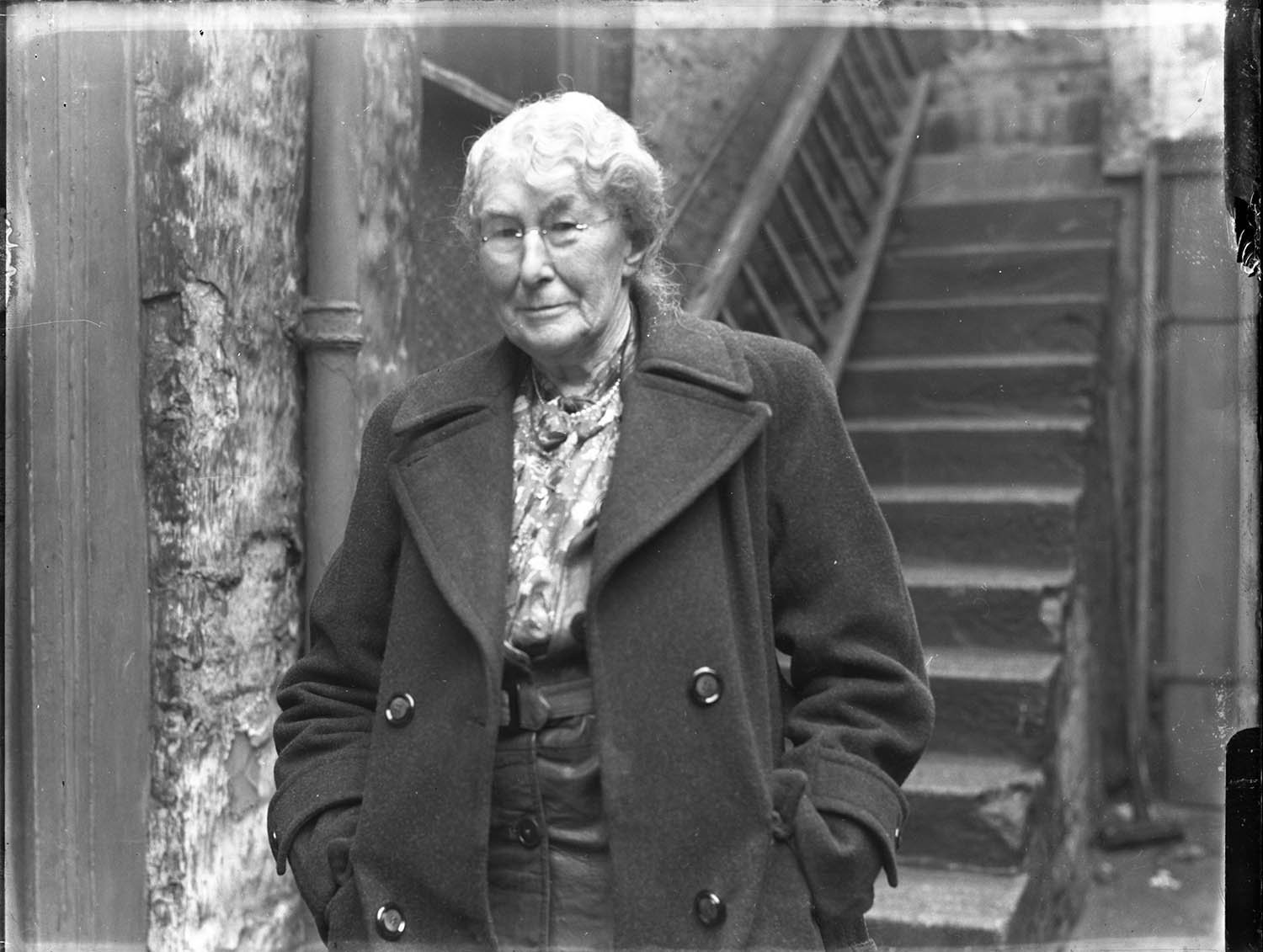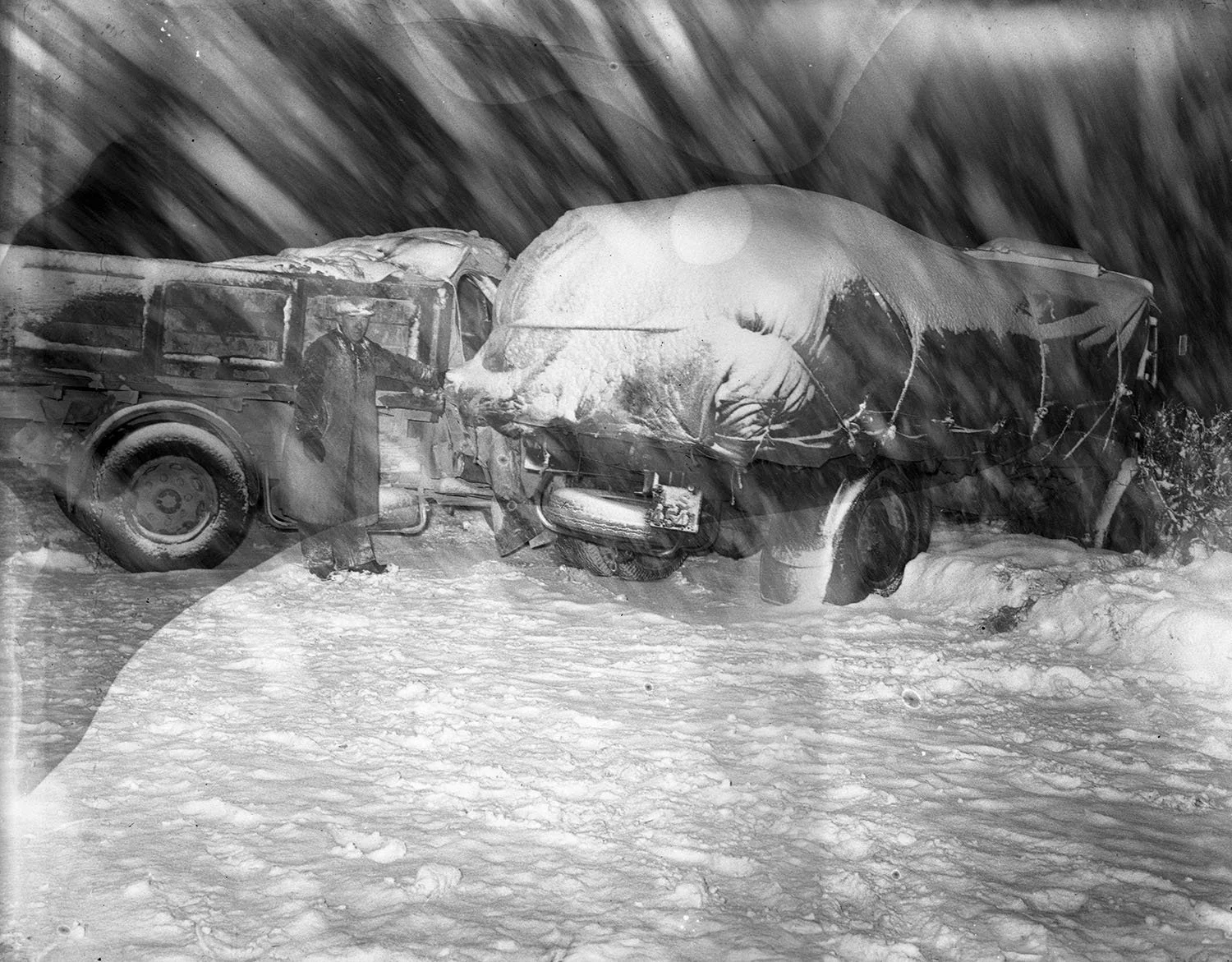Onwards and Upwards!
As I alluded to in our first blog post, (if you haven’t already read it you can do so here) David Smith’s first premises as a freelance photographer and journalist were not the most salubrious.
The door between Cairns’ and Rea’s shops led to Smith’s office. [BRO 1250/81]
In rooms above Mr Cairn’s plumbers shop at 120 Marygate, Berwick-upon-Tweed, Smith founded his ‘Photo-News Service’. As the name suggests, the business supplied both photographs and written copy. The premises on Marygate afforded him a small office space where he could write and a darkroom for developing and printing.
Almost immediately after starting out on his own, in late January 1951, Smith also began to undertake commercial photographic work. This would be a mainstay of his business until the closure of the Photo Centre in 2012. In later years when the demand for local news from the national press dwindled, the commercial side of the business went from strength to strength.
Portraits taken in the plumber’s yard [BRO 1944/1/19/2&3]
One thing which David Smith’s new premises lacked was a studio space. All the early portraiture we see in the collection was taken either in the subject’s home or outdoors within close proximity of the office. The Elizabethan Ramparts offered one such scenic backdrop. Passport photographs, although still not in huge demand at this time, were often taken in the plumber’s yard as the background was not of such importance.
As well as commercial work such as portraiture, child studies, weddings and product photography to give but a few examples, Smith’s news coverage was thriving. Berwick, in the 1950s was a busy seat of industry and its position as a trading hub for the area meant quite a lot happened here. One of the first news events to appear in the collection is a photograph of the police searching for the Stone of Destiny after it was stolen from Westminster Abbey. It was believed that the stone was being transported north by car. As his office was practically on the Great North Road (now the A1), David Smith didn’t have far to travel to capture the scene.
Police search for the Stone of Destiny, January 1951 [BRO 1944/1/2/8]
Around this time, Smith also became the unofficial police photographer for the town. He was called out at all hours to document car crashes and crime scenes for the police. Although the resulting negatives were handed over for official use, it meant that he was first on the scene to capture the event for the news.
Accident on the Great North Road, 1951. [BRO 1944/1/101/1]
A glance at the catalogue from this period in the early 1950s shows the variety of work which was being carried out. It also highlights the amount of work too. Shortly after going freelance, Smith employed another photographer to help with the workload. Denis Straughan, who had originally worked for him at The Berwick Advertiser, had a fantastic eye for a photograph. Straughan later went on to become chief photographer at The Scotsman.
As well as his network of contacts helping get his output into the national press, they also helped him back in Berwick too. After a time photographing people out in the open on the town walls and in their homes, Smith began to use a secluded garden with a summer house as his backdrop. This same scene appears over and over again in his early commercial work and with a bit of research on the ground I managed to find the location. Just a stone’s throw from his office, down a small alleyway on Marygate, is the back garden of ‘Greystones’, a large house fronting onto Bankhill (now Abbeyfield Sheltered Housing). The house belonged to Miss Mary Grey, his former editor at Advertiser. Use of this spot gave a picturesque background away from the gawping public. The garden continued to be used until 1953, though sittings must have been arranged around the weather!
Mr F.R. Bryson photographed in the garden at ‘Greystones’ [BRO 1944/1/116/12]
In May 1952, David Smith managed to secure better premises at 10 Hide Hill, above the Universal Building Society. This time, there was an office, darkroom and even a small studio space where individual and small family portraits could be taken. The garden at ‘Greystones’ was still used for larger groups such as weddings. In all other respects the business continued as it had started with the addition of more staff. Denis Hay and Stuart Rennie joined on the photographic side and Bert James, whom Smith had known from Perth, covered the Alnwick area. Charlotte, David’s wife, assisted him in the business as she had always done.
The door to the right of the Building Society leads to 10 Hide Hill, David Smith’s name is shown on the plaque to the left of the doorway. [BRO 1944-1-501-02]
Bert James, 1952 [BRO 1944-1-265-05]
Denis Straughan at 10 Hide Hill. [BRO 1944-1-283-11]
All the photographs taken at this time were captured on plate cameras such as the one shown above in the hands of Bert James. This produced a glass negative of 3 ¼” x 4 ¼” (quarter plate). A conservative estimate would suggest that the business took around 40,000 of these glass negatives before switching to film in the late 1950s. With a glass plate, the photographer would get one chance to take the photograph before having to insert a new plate for the next shot. Timing was vital, especially when covering news items.
Once a negative was developed it would be printed in the darkroom. It would then be wrapped in paper (in the early days this was just any old scrap paper that was lying around the office). The negative was then numbered and put back into its original box. That box was in turn given a number and their details were entered into an index. Thankfully we have all the indexes, and our fantastic volunteer Jim has typed them up, they can be found HERE.
Some of David Smith’s child portraits on display in a shop window on Hide Hill, Berwick-upon-Tweed. [BRO 1944-1-170-10]
A lot of the early wrapping material used for the glass plates is very acidic and not the best for storing vulnerable negatives. I am in the process of re-packaging the plates into acid free envelopes. I’ll write a bit more about this in a future post. In some cases the scrap paper in itself is very interesting, some are even typed reports which had been dictated to newspapers or the BBC over the telephone below is an example from November 1952.
Paper used to wrap negative number 1 from box 255 from November 1952.
The events and stories which David Smith and his staff covered during this period were extremely varied. Take a look at our Instagram or Facebook pages for weekly posts of images from the collection.
The business remained at 10 Hide Hill until September 1954 when it moved to a former solicitor’s office at 17 Bridge Street. This would become its home until 2012.
More about that in our next post – keep your eyes peeled!










